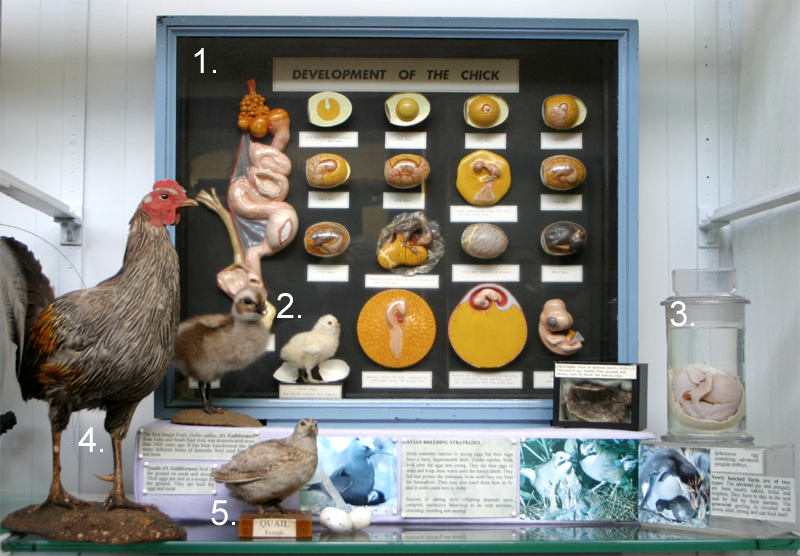
AVIAN BREEDING STRATEGIES
Birds resemble reptiles in laying eggs but their eggs have a hard, impermeable shell. Unlike reptiles, birds look after the eggs and young. They lay their eggs in nests and keep them warm until the babies hatch. They fed and protect the immature birds until they can fend for themselves. They may also teach them how to fly and in some cases how to swim. Success in raising their offspring depends upon complex, instinctive behaviour to do with territory, courtship, breeding and nesting. Newly hatched birds are of two types: the altricial jay and penguin are born nearly naked, blind and helpless. They have to stay in the nest and be fed by their parents.

1. Models show development of young chick within the shell.
2. A precocial gosling is covered with down, alert, strong and can feed itself.
3. An egg containing an advanced penguin embryo; altricial penguin chicks are nearly helpless when born and have to be cared for and fed by their parents.
4. The Red Jungle Fowl, Gallus gallus, (O. Galliformes) from India and South East Asia was domesticated more than 5000 years ago. It has been transformed into the many different forms of domestic fowl used for eggs and meat.
5. Quail, Coturnix coturnix, (O. Galliformes) and eggs. Quails feed on the ground on seeds and shoots. Their eggs are laid in a scrape on the ground. They are bred for eggs and meat.






